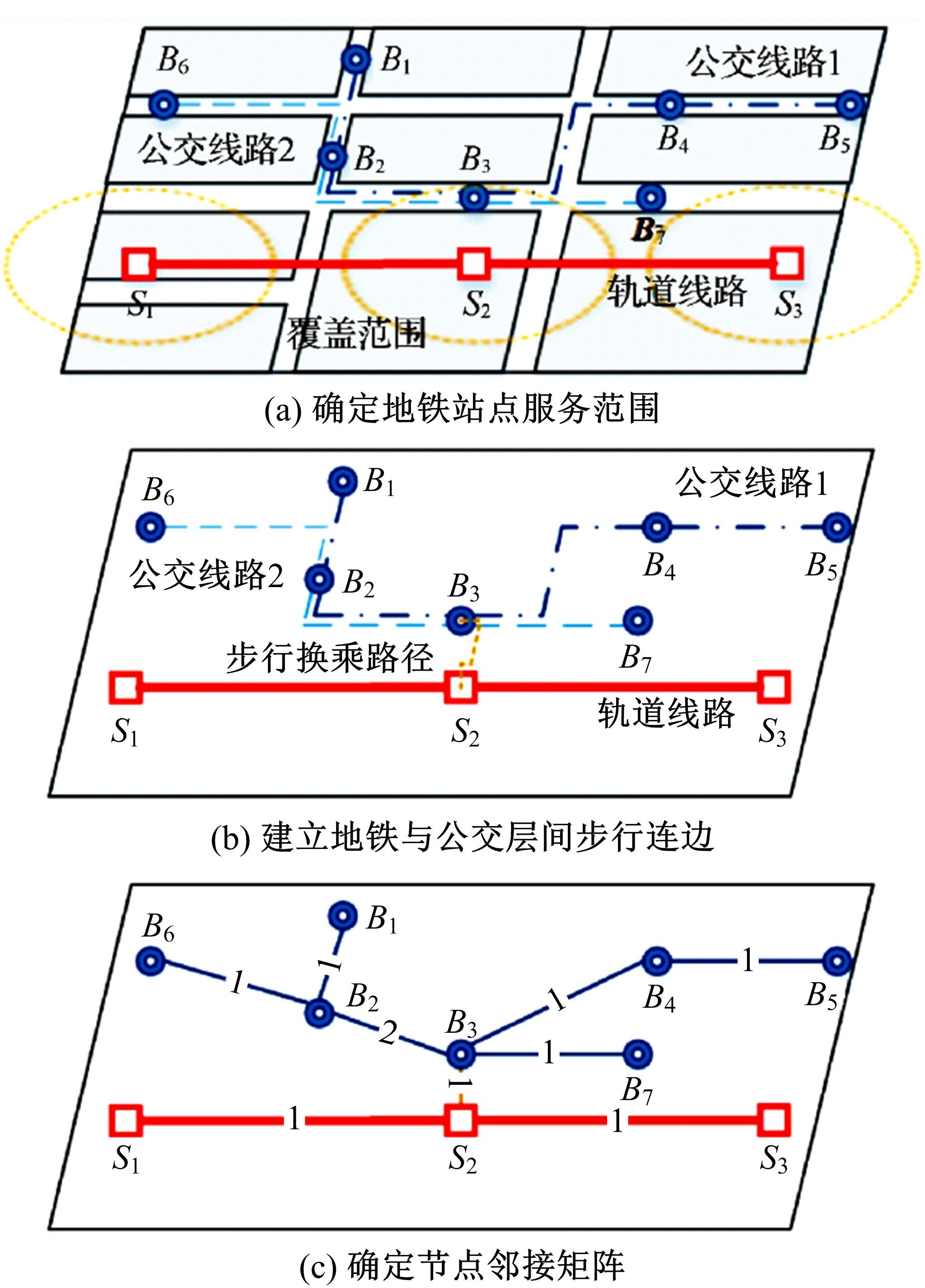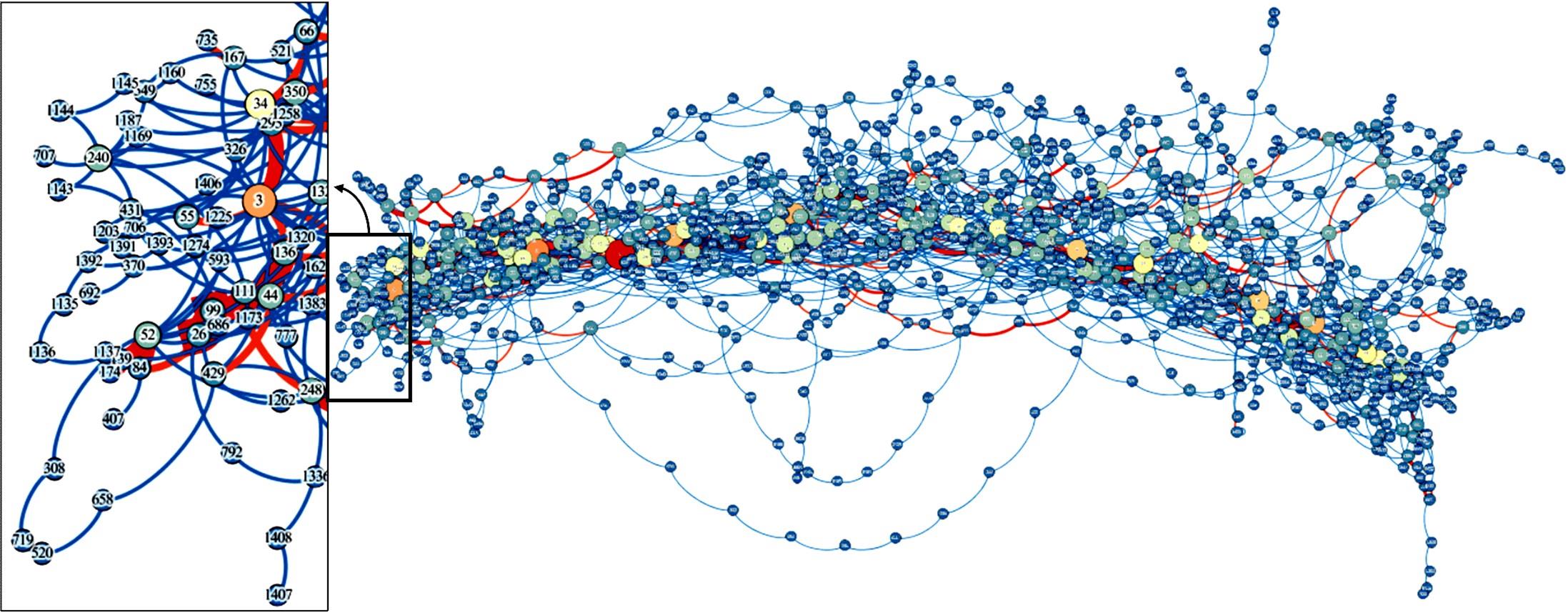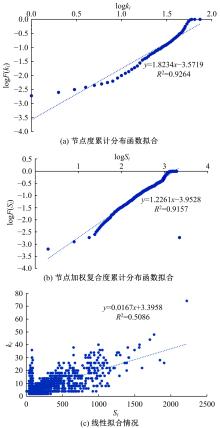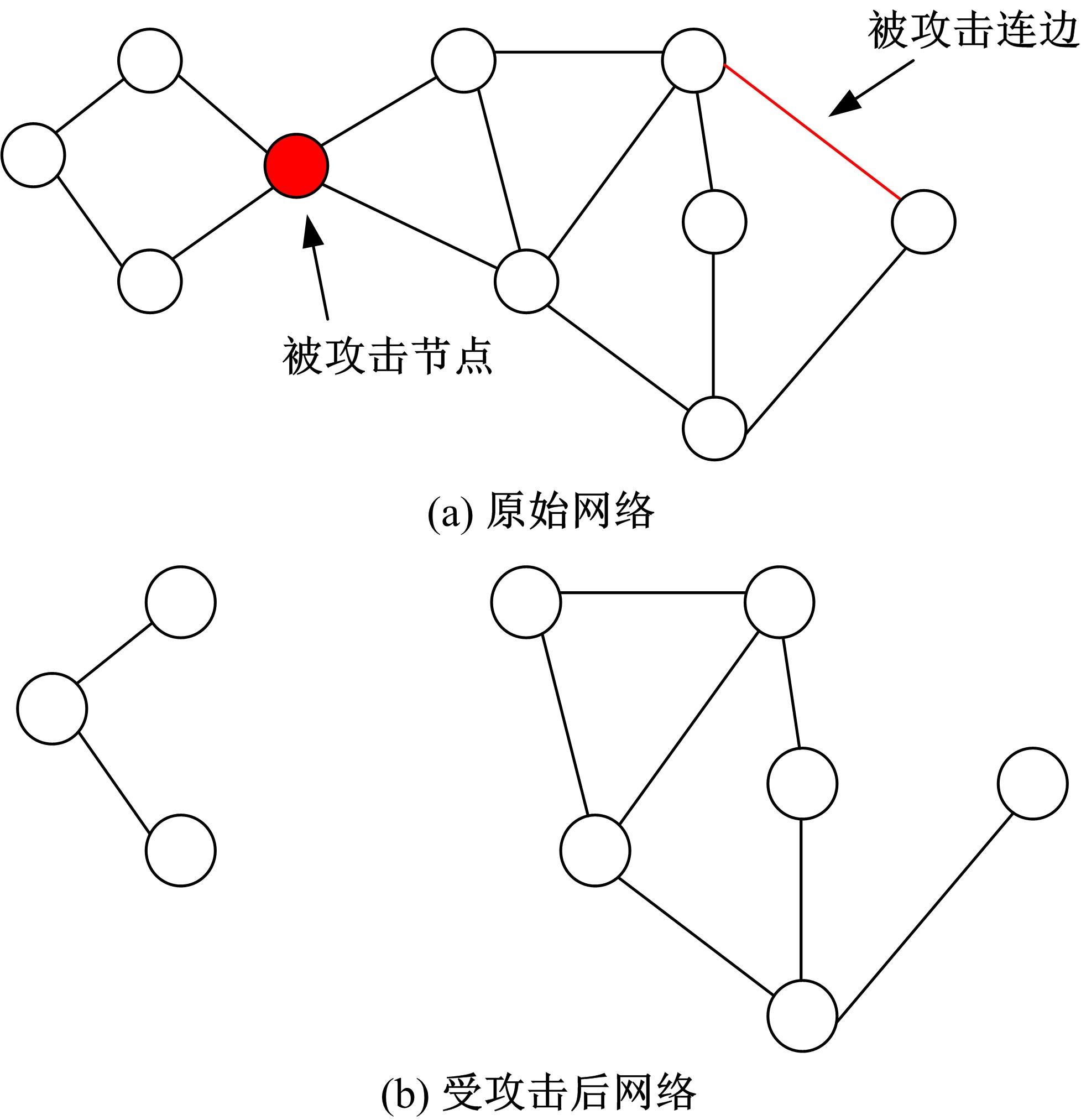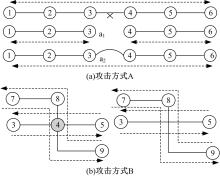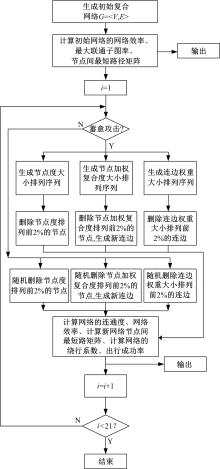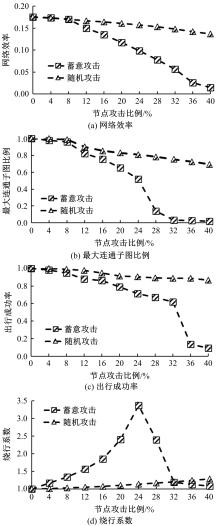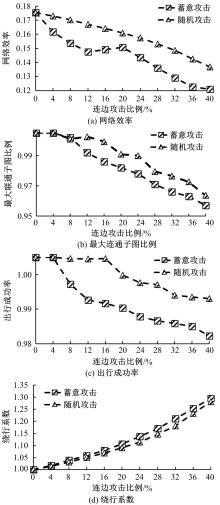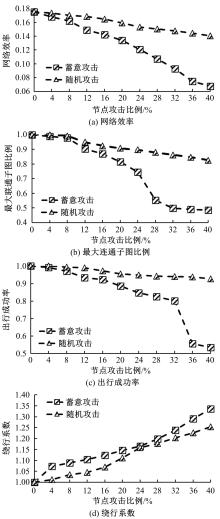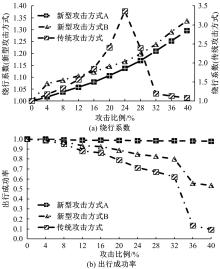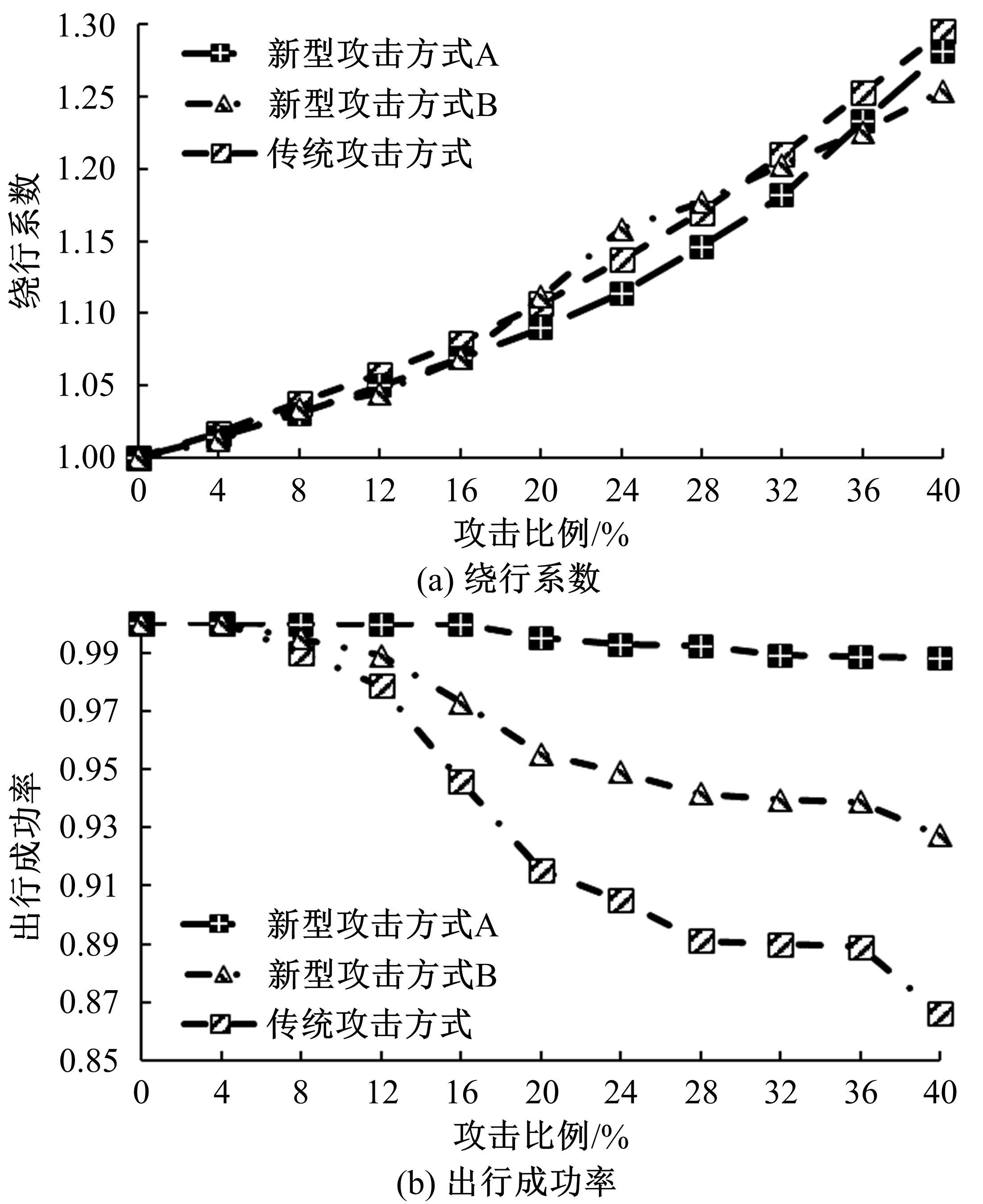Journal of Jilin University(Engineering and Technology Edition) ›› 2022, Vol. 52 ›› Issue (11): 2582-2591.doi: 10.13229/j.cnki.jdxbgxb20210390
Construction and robustness analysis of urban weighted subway⁃bus composite network
Heng-yan PAN1( ),Wen-hui ZHANG2,Bao-yu HU2,Zun-yan LIU2,Yong-gang WANG1(
),Wen-hui ZHANG2,Bao-yu HU2,Zun-yan LIU2,Yong-gang WANG1( ),Xiao ZHANG3
),Xiao ZHANG3
- 1.College of Transportation Engineering,Chang'an University,Xi'an 710064,China
2.School of Traffic and Transportation,Northeast Forestry University,Harbin 150040,China
3.Shanghai Urban Construction Design & Research Institute(Group) Co. ,Ltd. ,Shanghai 200125,China
CLC Number:
- U491
| 1 | Pang J Z F, Bin O N, Ng K M, et al.Efficiency and robustness of different bus network designs[J]. International Journal of Modern Physics C, 2015, 26(3): 1550024. |
| 2 | Derrible S, Kennedy C. The complexity and robustness of metro network[J]. Physica A: Statistical Mechanics and its Application, 2010, 389(17): 3678-3691. |
| 3 | Yang Y H, Liu Y X, Zhou M X, et al. Robustness assessment of urban rail transit based on complex network theory: a case study of the beijing subway[J]. Safety Science, 2015, 79: 149-162. |
| 4 | Latora V, Marchiori M. Is the boston subway a small-world network[J]. Physical A: Statistical Mechanics and its Applications, 2002, 314(1-4): 109-113. |
| 5 | Angeloudis P, Fisk D. Large subway systems as complex networks[J]. Physica A: Statistical Mechanics and its Applications, 2006, 367(4): 553-558. |
| 6 | 陈峰, 胡映月, 李小红, 等. 城市轨道交通有权网络相继故障可靠性研究[J]. 交通运输系统工程与信息, 2016, 16(2): 139-145. |
| Chen Feng, Hu Ying-yue, Li Xiao-hong, et al. Cascading failures in weighted network of urban rail transit[J]. Journal of Transportation Systems Engineering and Information Technology, 2016, 16(2): 139-145. | |
| 7 | 甘俊杰, 聂规划, 徐迪. 武汉市地铁网络复杂特性与鲁棒性研究[J]. 安全与环境工程, 2018, 25(6): 120-126. |
| Jun-jie Gang, Nie Gui-hua, Xu Di. Complex characteristics and robustness of wuhan metro network[J]. Safety and Environmental Engineering, 2018, 25(6): 120-126. | |
| 8 | 蔡鉴明, 邓薇. 长沙地铁网络复杂特性与级联失效鲁棒性分析[J]. 铁道科学与工程学报, 2019, 16(6): 1587-1596. |
| Cai Jian-ming, Deng Wei. Complex characteristics of Changsha metro network and robustness analysis of cascading failures[J]. Journal of Railway Science and Engineering, 2019, 16(6): 1587-1596. | |
| 9 | 杜斐, 黄宏伟, 张东明, 等. 上海轨道交通网络的复杂网络特性及鲁棒性研究[J]. 武汉大学学报: 工学版, 2016, 49(5): 701-707. |
| Du Fei, Huang Hong-wei, Zhang Dong-ming, et al. Analysis of characteristics of complex network and robustness in shanghai metro network[J]. Engineering Journal of Wuhan University, 2016, 49(5): 701-707. | |
| 10 | 强添纲, 赵明明, 裴玉龙. 城市多模式交通网络的复杂网络特性与鲁棒性研究[J]. 交通信息与安全, 2019, 37(1): 65-71. |
| Qiang Tian-gang, Zhao Ming-ming, Pei Yu-long. An analysis of characteristics of complex network and robustness in harbin multi-mode traffic network[J]. Journal of Transport Information and Safety, 2019, 37(1): 65-71. | |
| 11 | 罗艺, 钱大琳. 公交-地铁复合网络构建及网络特性分析[J]. 交通运输系统工程与信息, 2015, 15(5): 39-44. |
| Luo Yi, Qian Da-lin. Construction of subway and bus transport networks and analysis of the network topology characteristics[J]. Journal of Transportation Systems Engineering and Information Technology, 2015, 15(5): 39-44. | |
| 12 | 鲍登, 高超, 张自力. 基于复杂网络的公交-地铁复合网络鲁棒性分析[J]. 西南师范大学学报: 自然科学版, 2017, 42(5): 22-27. |
| Bao Deng, Gao Chao, Zhang Zi-li. Analysis of robustness of bus and subway interdependent network based on the complex network theory[J]. Journal of Southwest China Normal University(Natural Science Edition), 2017, 42(5): 22-27. | |
| 13 | Wang L J, Zheng S Y, Wang Y G, et al. Identification of critical nodes in multimodal transportation network[J]. Physica A: Statistical Mechanics and its Applications, 2021, 580: 126170. |
| 14 | 薛锋, 何传磊, 黄倩, 等. 多式轨道交通网络的耦合协调度[J]. 吉林大学学报: 工学版, 2021, 51(6): 2040-2050. |
| Xue Feng, He Chuan-lei, Huang Qian, et al. Coordination degree of multimodal rail transit network[J]. Journal of Jilin University(Engineering and Technology Edition), 2021, 51(6): 2040-2050. | |
| 15 | 鞠艳妮, 李宗平, 陈宇帆, 等. 区域轨道交通系统节点重要度及故障恢复研究[J]. 中国安全科学学报, 2021, 31(2): 112-119. |
| Ju Yan-ni, Li Zong-ping, Chen Yu-fan, et al.Study on node importance and failure recovery of regional rail transit system[J]. China Safety Science Journal, 2021, 31(2): 112-119. | |
| 16 | 牟能冶, 康秋萍, 贾程方. 突发事件影响下的城市快递网络脆弱性评估[J]. 中国安全科学学报, 2020, 30(12): 125-132. |
| Mu Neng-ye, Kang Qiu-ping, Jia Cheng-fang. Vulnerability assessment of urban express networks under influence of emergencies[J]. China Safety Science Journal, 2020, 30(12): 125-132. | |
| 17 | 林鹏飞, 翁剑成, 付宇, 等. 基于刷卡数据的轨道交通加权网络结构特征[J]. 吉林大学学报: 工学版, 2020, 50(3): 956-962. |
| Lin Peng-fei, Weng Jian-cheng, Fu Yu, et al. Structure characteristics of rail transit weighted network based on smart card data[J]. Journal of Jilin University(Engineering and Technology Edition), 2020, 50(3): 956-962. | |
| 18 | .城市综合交通体系规划标准 [S]. |
| [1] | Song FANG,Jian-xiao MA,Gen LI,Ling-hong SHEN,Chu-bo XU. Traffic risk analysis of moving work zone on right lane of city expressway [J]. Journal of Jilin University(Engineering and Technology Edition), 2022, 52(8): 1786-1791. |
| [2] | Song-xue GAI,Xiao-qing ZENG,Xiao-yuan YUE,Zi-hao YUAN. Parking guidance model based on user and system bi⁃level optimization algorithm [J]. Journal of Jilin University(Engineering and Technology Edition), 2022, 52(6): 1344-1352. |
| [3] | Hong-feng XU,Hong-jin CHEN,Dong ZHANG,Qian-hui LU,Na AN,Xian-cai Geng. Fully⁃actuated signal timing technique for isolated signalized intersections in connected vehicle environment [J]. Journal of Jilin University(Engineering and Technology Edition), 2022, 52(6): 1324-1336. |
| [4] | Jing-xian WU,Hua-peng SHEN,Yin HAN,Min YANG. Residents' commuting time model under the nonlinear impact of urban built environment [J]. Journal of Jilin University(Engineering and Technology Edition), 2022, 52(11): 2568-2573. |
| [5] | Feng XUE,Chuan-lei HE,Qian HUANG,Jian LUO. Coordination degree of multimodal rail transit network [J]. Journal of Jilin University(Engineering and Technology Edition), 2021, 51(6): 2040-2050. |
| [6] | Bo PENG,Yuan-yuan ZHANG,Yu-ting WANG,Ju TANG,Ji-ming XIE. Automatic traffic state recognition from videos based on auto⁃encoder and classifiers [J]. Journal of Jilin University(Engineering and Technology Edition), 2021, 51(3): 886-892. |
| [7] | Xiao-dong ZHU,Qi-xian ZHANG,Yuan-ning LIU, WU-di,Zu-kang WU,Chao-qun WANG,Xin-long LI. Iris recognition based on multi⁃direction local binary pattern and stable feature [J]. Journal of Jilin University(Engineering and Technology Edition), 2021, 51(2): 650-658. |
| [8] | Dian-hai WANG,Xin-yi SHEN,Xiao-qin LUO,Sheng JIN. Offset optimization with minimum average vehicle delay [J]. Journal of Jilin University(Engineering and Technology Edition), 2021, 51(2): 511-523. |
| [9] | Xian-min SONG,Ming-ye ZHANG,Zhen-jian LI,Xin WANG,Ya-nan ZHANG. Setting of dynamic bus lane and its simulation analysis and evaluation [J]. Journal of Jilin University(Engineering and Technology Edition), 2020, 50(5): 1677-1686. |
| [10] | Hong-fei JIA,Xin-ru DING,Li-li YANG. Bi-level programming model for optimization design of tidal lane [J]. Journal of Jilin University(Engineering and Technology Edition), 2020, 50(2): 535-542. |
| [11] | Chao-ying YIN,Chun-fu SHAO,Xiao-quan WANG,Zhi-hua XIONG. Influence of built environment on commuting mode choice considering spatial heterogeneity [J]. Journal of Jilin University(Engineering and Technology Edition), 2020, 50(2): 543-548. |
| [12] | Da-wei ZHANG,Hai-tao ZHU. An optimization⁃based evacuation model considering pedestrian heterogeneity [J]. Journal of Jilin University(Engineering and Technology Edition), 2020, 50(2): 549-556. |
| [13] | Yuan-li GU, Yuan ZHANG, Xiao-ping RUI, Wen-qi LU, Meng LI, Shuo WANG. Short⁃term traffic flow prediction based on LSSVMoptimized by immune algorithm [J]. Journal of Jilin University(Engineering and Technology Edition), 2019, 49(6): 1852-1857. |
| [14] | Yi-ming BIE,Kai JIANG,Ru-ru TANG,Lin-hong WANG,Xin-yu XIONG. Time of interval partition for traffic control at isolated intersection considering impacts of plan transition [J]. Journal of Jilin University(Engineering and Technology Edition), 2019, 49(6): 1844-1851. |
| [15] | Guo-zhu CHENG, Si-he FENG, Tian-jun FENG. Setting condition of on⁃street parking space occupied vehicle lane [J]. Journal of Jilin University(Engineering and Technology Edition), 2019, 49(6): 1858-1864. |
|
||

